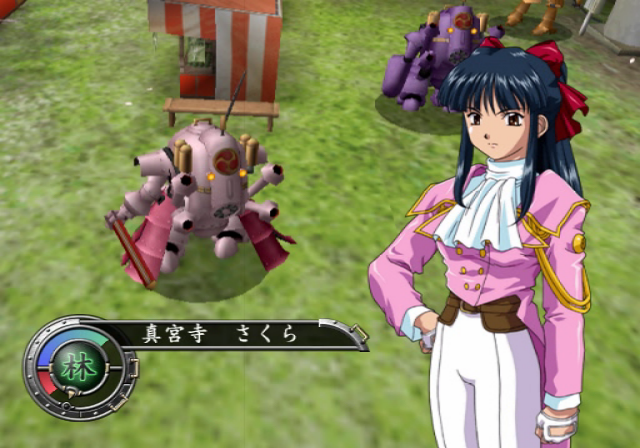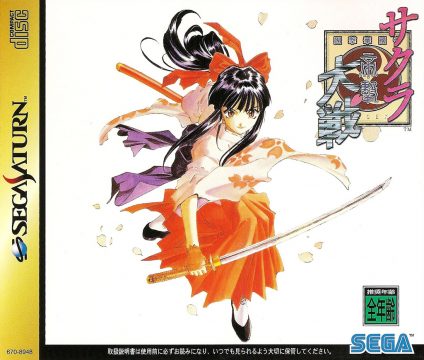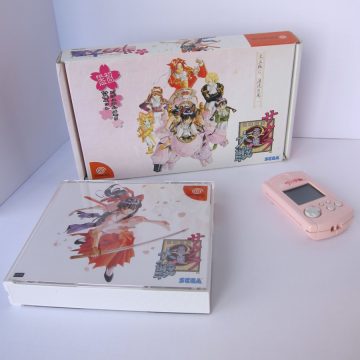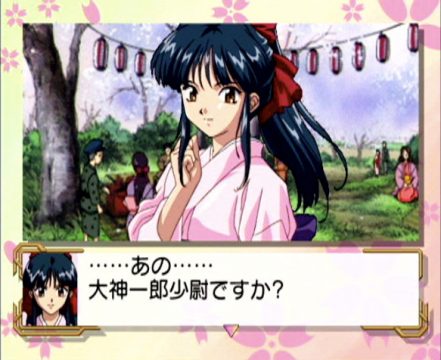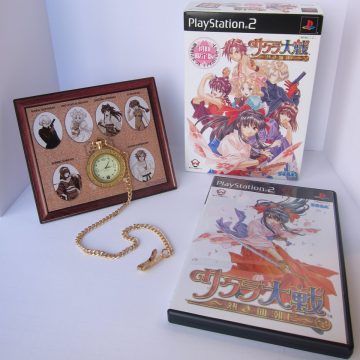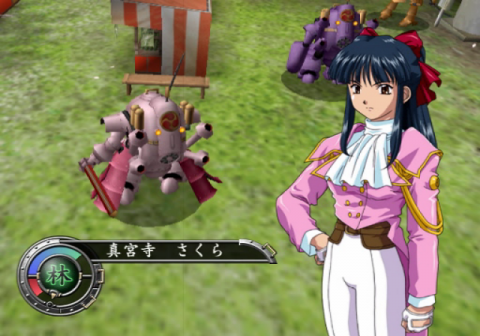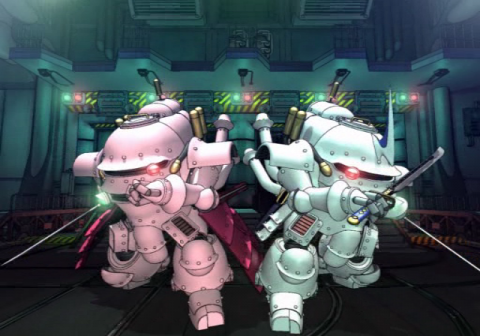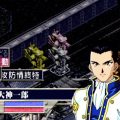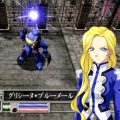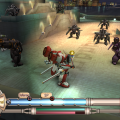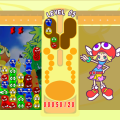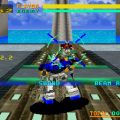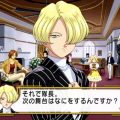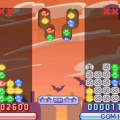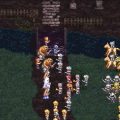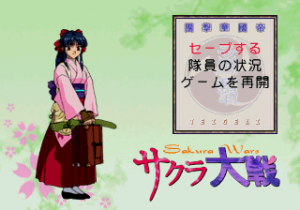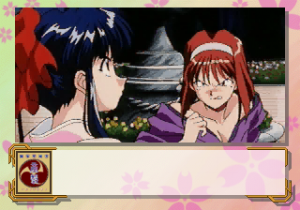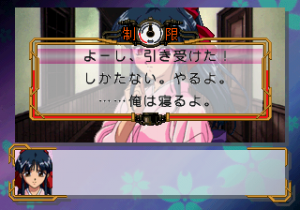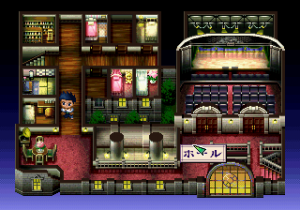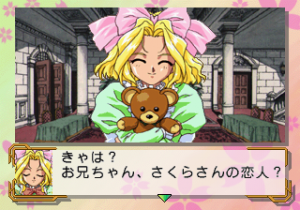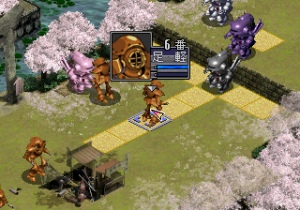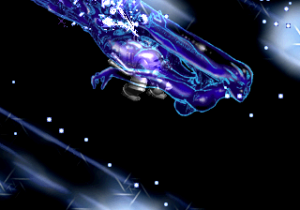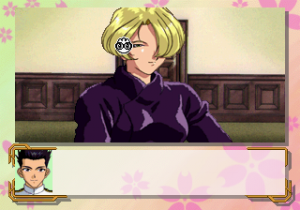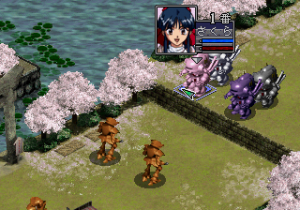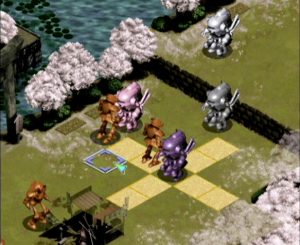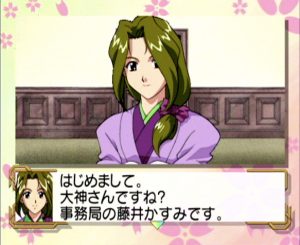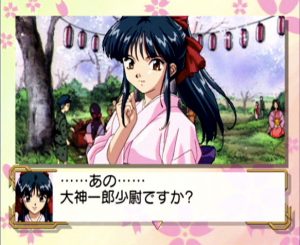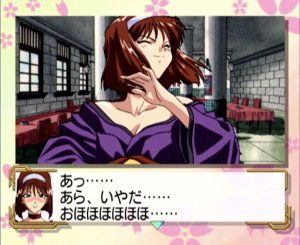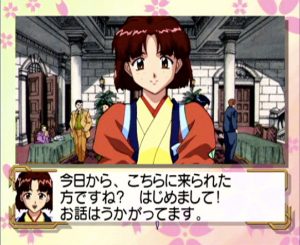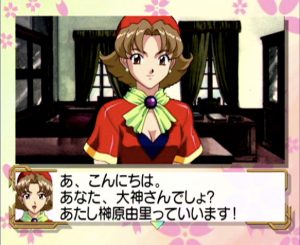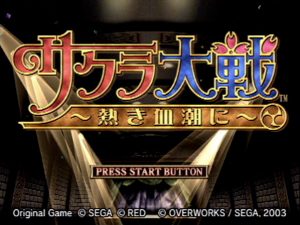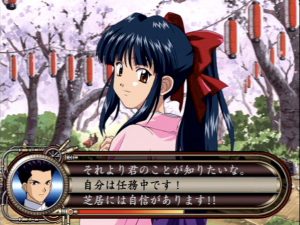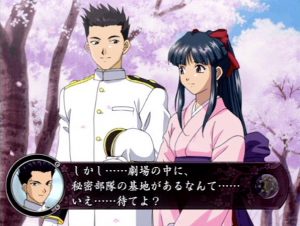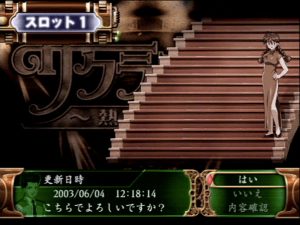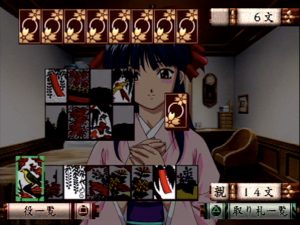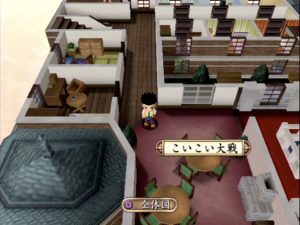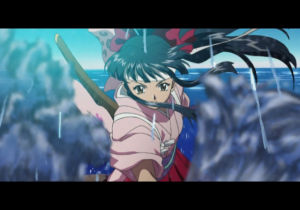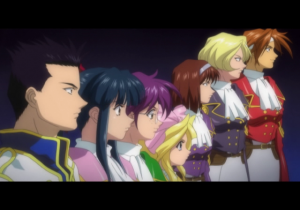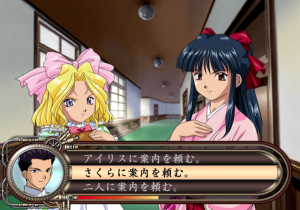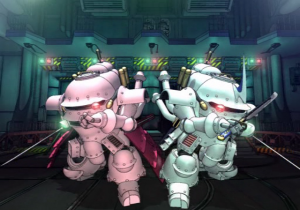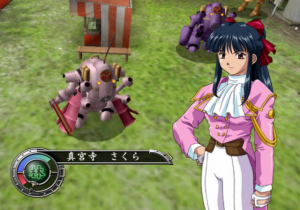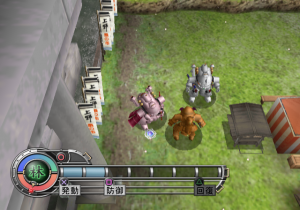The first Sakura Taisen game was launched for Sega Saturn in September of 1996. The limited edition (a Sakura Taisen tradition well before such oversized boxes were a very common sight on Japanese game store shelves) included a standard Saturn mouse and a mousepad with one of two different designs.
The game opens with Second Lieutenant Ichirou Ohgami arriving in Tokyo for his assignment as the leader of a secret combat squadron, the Flower Troupe of the Imperial Floral Assault Group. He meets his contact, Sakura Shinguji, at Ueno Park and is taken to the headquarters of the Teikoku Kagekidan (or Teigeki). The first chapter comprises Ohgami meeting the members of the Hanagumi (“Flower Troupe”), trying to figure out why he has been sent to this place, and being shocked to learn that he is to be the lowly ticket-taker for a musical theater. There are several puns involving homophones like butai, which can mean either “combat unit” or “stage”, and kagekidan, which can mean “floral assault troupe” or “musical theater troupe”. Finally he discovers that the Flower Troupe is a secret combat squad after all, and he needs to lead it against the occult threat of the Black Nest Society and their demonic summons.
The first game establishes many of the hallmarks of the series, including the build-up to a false ending, after which the stakes are raised and the game goes on. At this point, the Koubu are upgraded to much more powerful models – in ST1, the Jinbu (“divine warrior”). Massive, preposterous vehicles and mechanical contraptions are another recurring theme. The first game includes the Gouraigou (a Koubu-deploying train that inexplicably spirals around the interior of its tunnel), and the Shougeimaru (a huge battle blimp).
Sakura Taisen is often described as an RPG, even by NISA, the localizers of Sakura Taisen V. This is probably because of its tactical combat system, hit point gauges, and so on. There are no experience points, levels, exploration, or equipment to be had here, though; every playthrough of a Sakura Taisen game contains the same battles, with the characters following the same advancement. The only differences are dependent on the chapter-to-chapter motivation levels, based on the player’s answers to LIPS interactions. The official genre listed on the game boxes, incidentally, is “Dramatic Adventure”.
Character-themed minigames are another staple of the series that start here; if you discover the correct scene while wandering the environs of the theater, you may have a chance to test your reflexes by helping Maria cook borscht, accept Kouran’s challenge to a game of hanafuda, or clean the theater for Sakura in a fast-scrolling obstacle run.
In May of 2000, the first game was re-released for Dreamcast. It’s essentially a direct port of the original Saturn version, but with higher resolution videos and visuals, serving as an opportunity for newcomers to join who missed the series on the Saturn. It also made possible the carryover of an unbroken line of save data through all four of the mainline Sakura Taisen titles that would eventually be available for Dreamcast. The DC version was then used as the basis for the Windows port. This release was actually localized into Russian, technically making it the first Sakura Taisen game published outside of Japan.
Atsuki Chishio ni
In 2003, a heavily revamped version of Sakura Taisen was released for PlayStation 2, with a new subtitle in keeping with the poetic style of the sequels: Atsuki Chishio ni (“In Hot Blood”). The remake combines the original story with a fresh UI, full-frame graphics, new anime sequences, and other modernizations familiar
from Sakura Taisen 3 and Sakura Taisen 4 on Dreamcast. It also adds new scenes with characters from later games, updates the battle system to ARMS, and offers a new ending.
Here, backgrounds and character busts fill the whole frame during the adventure part, rather than occupying a little window. The portraits in the dialogue box are enlivened with more expression and with animated backgrounds to convey emotion. Ohgami’s portrait even changes depending on the currently selected dialogue option during LIPS decisions. The theater is now a full-on 3D map, which you can run around in freely like in Sakura Taisen 3 and Sakura Taisen 4. It also includes indications of where events are available, removing the guesswork from deciding where to go next. A big addition to the Long Day mode is a remake of Koi Koi Taisen (the hanafuda tournament minigame), subtitled Koi Koi Taisen: Atsuki Shoubu ni, replacing “Blood” with “Challenge”. It includes several scenarios, each complete with its own little storyline (such as a Christmas at the Teigeki!) and opportunities to affect the fortunes of other characters by responding to LIPS decisions.
The limited edition includes a pocket watch with a display stand, and preorders came with a huge, pink, heart-shaped alarm clock. The most exciting bonus item, though, is the DVD titled Project S, which details the history of the series through interviews with the creators.
The PlayStation 2 remake was an initial attempt to introduce the series to people outside of the core Sega fanbase, and even to international fans. There were plans early on to localize Atsuki Chishio ni and the subsequent PS2 titles, in what was called the “Sakura Taisen World Project”, which would have brought Sakura Taisen bursting onto the international stage. Presumably, if the PS2 game had been successful, Sakura Taisen 2–4 remakes and localizations would have followed, thus bringing the entire series to the PS2 and out to the international scene.
The Project S DVD concludes with a vision of this international Sakura Taisen future. (To illustrate that vision, at one point Kouhei Tanaka even does a speculative impression of Westerners singing along with his main ST theme in a heavy accent.) Nothing came of this grand scheme, though, at least until NISA eventually released an English edition of Sakura Taisen V in 2010 on the PS2 and Wii, where unfortunately it was met with indifference.
In 2005, Sakura Taisen was bundled with its sequel and released on the PSP. They’re straightforward ports, using the crisper visuals found in the Dreamcast and Windows ports. The dialogue screens have been redone to display the backgrounds in widescreen. However, for the strategy sequences, the right part of the screen is used for a status bar, maintaining the 4:3 view of the battle screen. The sound quality is also degraded, due to fitting five CDs onto one UMD.
